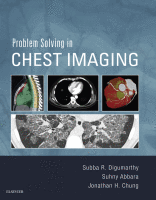Physical Address
304 North Cardinal St.
Dorchester Center, MA 02124

■ Diaphragm Relevant Anatomy The diaphragm is a dome-shaped muscle with a central noncontractile tendon. Anteriorly and laterally, the diaphragm attaches to the body wall (ribs, costal cartilages, inferior sternum, and xiphoid process) via muscular diaphragmatic slips ( Fig. 33.1A…

▪ Introduction Cardiac tumors, benign and malignant types, are uncommon, with an incidence of 0.002% to 0.3% on autopsy series. However, even benign cardiac tumors may present with significant obstructive symptoms or be a substrate for arrhythmias. Tumors in the…

▪ Introduction Cardiomyopathies and myocarditis are disorders frequently encountered in clinical practice, and imaging plays a major role in the diagnosis, management, and follow-up of these diseases. This chapter will describe imaging of the cardiomyopathies that have characteristic imaging features…

■ Introduction: Using Cardiovascular Imaging Cardiovascular diseases remain one of the most common causes of death in industrialized nations. Over the last decade, substantial technical advances in cardiovascular imaging have been made and have helped mature such modalities from research…

■ Introduction The aorta is the largest artery in the body, arising from the left ventricular outflow tract and branching throughout the body. The spectrum of thoracic aortic disease is wide, with causes that may be chronic or acute, congenital…

▪ Introduction Congenital heart and vascular diseases are relatively uncommon malformations of the heart or great vessels that occur during embryologic development. With advances in medical and surgical treatments, most patients survive into adulthood, and it is imperative for the…

▪ Introduction CT pulmonary angiography (CTPA) to assess for pulmonary embolism (PE) makes up the lion's share of most radiologists’ exposure to the pulmonary vascular system and is the focus of this chapter. The pulmonary vascular anatomy is detailed because…

■ Introduction Certain diffuse lung diseases are associated with high- or low-attenuation lesions. High-attenuation lesions are most often due to calcium deposition from a variety of mechanisms, but can also be due to the accumulation of other radiopaque substances such…

Introduction and Background Although different in appearances on imaging, radiation and drug-induced lung diseases share several similarities. Both entities may present with a variety of appearances, both in the acute and subacute or chronic settings, and require a high level…

Introduction Cystic lung diseases present a considerable diagnostic challenge mainly because CT findings can be similar in many of these diseases. In addition, a number of pulmonary abnormalities can result in cystic patterns that mimic true lung cysts. However, the…